Tag: Alexis Jais ’18
Winter in the City: Which Deserves a Visit During the Holidays?
by The Cowl Editor on November 30, 2017
Arts & Entertainment
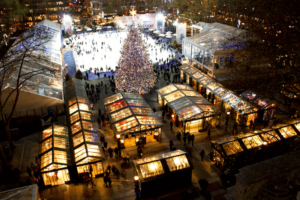
by Julia Vaccarella ’20
A&E Staff
The temperature outside is beginning to get colder, and whether you are away from campus for the weekend or visiting during winter break, there are many events going on in New York City in the coming weeks and months.
Bank of America sponsors the Winter Village at Bryant Park each year. Visitors can ice skate outdoors in the park, which is the only rink with free admission in all of New York City. The park periodically runs themed skate nights, like Decades Night, for college students. They also offer discounts on skate rentals for anyone who brings a student ID.
With over 100 kiosks, the Winter Village is also a great place to buy one-of-a-kind items or get a head start on holiday shopping. Vendors sell artisanal and unique clothing items, as well as home decorations. The Winter Village also runs a variety of concession stands with coffee, sandwiches, and other snacks. A casual pop-up restaurant called Public Fare is conveniently located next to the ice skating rink.
Department stores throughout NYC have decorated the windows with light displays that remain through the end of December. Saks Fifth Avenue has adopted a Disney theme this year, displaying a castle and 14 animated scenes from Snow White. The Lord & Taylor storefront has five animated panels with one featuring the skyline of Manhattan. Other stores that participate in these displays include Macy’s, Tiffany & Co., and Barneys, spanning from 38th Street to 58th Street.
For anyone looking to escape the cold and do something inside, New York City is also home to many unique art museums. Located on the Upper East Side, the Metropolitan Museum of Art has two exhibits featuring Edvard Munch and Michelangelo.
“Michelangelo: Divine Draftsman and Designer” features a varied selection, from drawings to marble sculptures, while the Munch exhibition focuses on self-portraits and other works never before seen in the United States. Both exhibits are open until February 2018 and are included in the price of admission to the museum.
The New York Botanical Garden is sponsoring an attraction that uses plant parts like seeds, leaves, and twigs to create replicas of major landmarks, such as the Statue of Liberty and the Brooklyn Bridge.
Model trains will move through the recreated city, and this season’s show will also highlight several of Midtown Manhattan’s famous skyscrapers. An installation project called “Yayoi Kusama: Infinity Mirrors” will be displayed in the Upper East Side and at the David Zwirner Gallery in Chelsea through the middle of December. At 88 years old, Kusama’s work spans across many decades. Admission is free, but long lines are expected after the success of a similar project in Los Angeles.
Kusama’s main attraction, “Let’s Survive Forever,” includes mirrors that reflect around the room. The interactive exhibit also has two other rooms with color-changing lightbulbs, flowers, and more.
From ice skating to art museums, the Big Apple has something for everyone this winter.
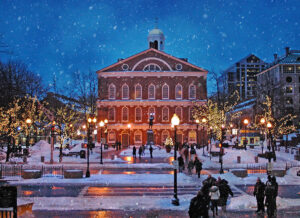
by Alexis Jais ’18
A&E Staff
Sweet New England summers are the perfect opportunity to hit some of Cape Cod’s many beautiful beaches, hike in northern Rhode Island’s peaceful nature reservations, and spend an afternoon with a cold drink at a bayside restaurant. Autumn’s fleeting presence paints a breathtaking picture of the New England everyone knows and loves to admire. But come winter, we have to shelve some of our favorite summer and autumn pastimes as the snow begins to fall.
Those who have experienced more than a few winters in Providence are all too familiar with the charming and traditional wintertime activities Providence has to offer. Many enjoy ice-skating at the Alex and Ani center, taking a brisk walk by the river in January, and grabbing hot coffee at Blue State on Thayer Street. Even so, an hour’s bus or train ride and $25 will have any Providence College student ready to adventure to nearby winter hotspots in Boston.
Boston is one of the most historic destinations in New England and has so much more to offer than just summer fun. Even in the chilliest months, the Greater Boston area is home to a few rather extensive natural reservations including Blue Hills in Canton. On weeknights, you can ski the Hills for just $30 between 5 p.m. and 9 p.m.
Sledding is free at the Boston Common and you can skate the Common’s Frog Pond for only $6. You can also take part in one of Boston’s many tree-lighting ceremonies for free. The one in Boston Common includes activities and games with prizes as well as refreshments. Others take place in Copley Square and the Commonwealth Mall.
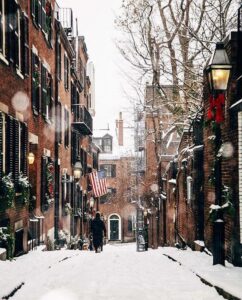
Newbury and Boylston Street shops and restaurants have some of the most festive decor and lights, which make for a lovely winter stroll and the perfect place to get some holiday shopping done. If Boston’s winter weather is something you would rather avoid, the city has even more to offer indoors.
Irish pubs and historic taverns like the Union Oyster House seem to be around every corner throughout Boston, and offer a cozy and welcoming atmosphere to grab a drink or cup of New England clam chowder.
The Black Rose has a menu that combines New England favorites as well as classic Irish dishes. Bull McCabe’s has theme nights like $2 taco Tuesdays, and ‘pay-the-time’ for a burger and fries Monday through Friday.
Other indoor activities in the city like visiting the Museum of Fine Arts (free admission after 3 p.m. for ages 7-17) or strolling through Faneuil Hall to grab a bite and catch a glimpse of the famous 85-foot tree. All this will keep you warm while also allowing you to experience Boston at its fullest, even in the frosty winter months.
Whether you are up for braving the freezing wind this winter or would prefer to sit by the fire and watch the snowfall, Boston has something fun and inexpensive to offer for everyone’s wintertime fantasies.
Gearing Up For the Cold: Six Things to do this Weekend in Providence to Keep Warm
by The Cowl Editor on November 16, 2017
Arts & Entertainment
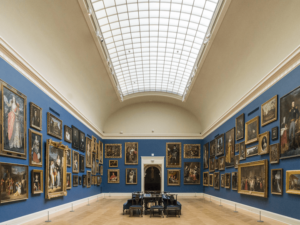
by Alexis Jais ’18
A&E Staff
After freshmen year, many Providence College students think they have done it all. Although events like Waterfire and shopping at the Providence Place Mall and boutiques on Thayer Street are all fun activities, the city of Providence has a lot more to offer.
As the biting winter months move in at full force, some of the cherished Providence peculiarities die away with summer’s sweet warmth and late sunsets. For this coming weekend, we have compiled a few cheap and unique Providence destinations into a handy list that will pull you out of the bleak drag of winter.
For film fanatics and those wanting to save 10 bucks on tickets alike, the Cable Car Cinema near College Hill offers a cozy, trendy space for moviegoers to relax and enjoy rare, independent films for half the price of a regularly priced ticket. Not to mention, a substantial bar area provides visitors with unique coffee and tea drinks, snacks, and alcoholic beverages for those of age. The Cable Car Cinema is quaint and quiet, but it is surely not lacking in that quirky Providence character we all know and love.
For those with energy to spare, the Shelter Arcade Bar in Olneyville is a great weekend destination if you have some extra money in the bank and a 21+ ID. This bar is exclusive to people who are over the age of 21, but has a lively and rousing bar atmosphere with plenty of snacks and vintage games to boot. Open from 6:30 p.m. to 1 a.m. Thursday through Sunday, the Arcade Bar has entertainment options to spare and is the perfect spot to have a drink and play some games with friends after a long week.
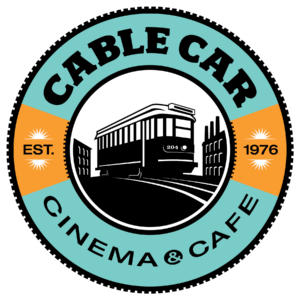
Sometimes a brisk winter walk is the perfect antidote for the stress that comes after a hectic week, and many may not know that Providence holds a woodsy gem right in the heart of the city called the Neutaconkanut Hill Conservancy. With several miles of trails and a breathtaking view of the city from the top, Neutaconkanut is often called “The last wild place in Providence.” If you are the type who needs a natural weekend getaway from the mundane routine of urban life, Neutaconkanut is a close and beautiful choice, especially for those with limited means of transportation.
This weekend you will not want to miss the various art exhibtions Providence has to offer. The city is filled with various museums such as the RISD museum, part of the Rhode Island School of Design, John Brown House Museum, and the Museum of Natural History and Planetarium. This month the RISD Museum has Altered States: Etching in Late 19th Century Paris on view until Dec. 3. The exhibition showcases the revolutionary transformation of the printmaking process of etching. With works done by well-known artists such as Edgar Degas, Mary Cassatt, Henri Guerard, and Albert Besnard, you will not want to miss this opportunity. The Museum of Natural History and Planetarium will opening a new exhibit Nov. 18 called African Rhythms: Selections from the Health Collection.
Providence has so much to offer this weekend and hopefully one of these events will deepen your love for this wonderful city.
Everett Open Stage Cultivates Creativity
by The Cowl Editor on November 10, 2017
Arts & Entertainment
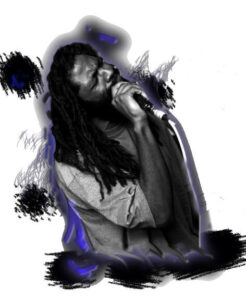
by Alexis Jais ’18
A&E Staff
The Open Stage series recently began at the Everett Company Stage & School in Downtown Providence. The school will hold Open Stage shows on the first Friday of each month until June of 2018. The Everett school hosts classes and performances of many different kinds, with a goal of bringing the youth of Providence to a place where they can share their talents and passions in a supportive environment.
The theme for this months Open Stage on Friday, November 3 was hip-hop and included spoken word poetry, original raps and song performances, and choreographed dances. In a small room that houses around 150 people, the stage might be modest, but its performers on a Friday Night Live or Open Stage night are far from quiet.
A young boy named Jonah choreographed his own dance to a dubstep remix. A tall, shy performer named Michael performed an original song of his, called “Michael in the Bathroom” for the first time in front of an audience. Each time a performer felt shy or made a mistake, the whole crowd supported them with cheers and words of encouragement.
The Open Stage is for kids who are just getting out there, who want to build their performance skills and hopefully gain some confidence for future endeavors in the entertainment industry. Another performer named Nathan showed his character by delivering a refreshingly authentic standup piece, drawing on anecdotes and stories from his years as a high schooler, referencing the realization that freshmen really are as annoying as everyone warned. Acts like Nathan and Jonah’s revealed a sense of fresh innocence every performer hopes to retain as they grow and change.
For the night’s finale, spoken word poet Vatic took the stage to perform some of his award-winning pieces; this change of pace quieted the room completely. He began with what he called a survey on police officers, which ended up being a shocking commentary on police violence.
As he continued talking, singing, and communicating in a way that seemed less like poetry and more like a friend talking to a friend, he ever so often promised to begin the “poetry” soon.
After a heated piece on the lack of freedom within the black community, Vatic stormed out of the stage room and all stood with bated breath; some audience members left out of confusion while some waited in anticipation. As he calmly walked back into the building, it was understood that the tension in the room was too much for Vatic to bear.
Viewers who attend Open Stage will be met with a novel and exciting experience at each session, many audience members will surely come back for many more performances throughout the season.
André Robert Lee Visits PC to Screen New Film, The Prep School Negro
by The Cowl Editor on November 2, 2017
Arts & Entertainment
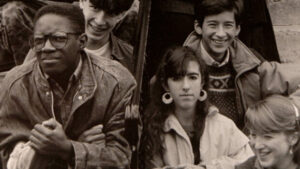
by Alexis Jais ’18
A&E Staff
On Oct. 27, Providence College welcomed independent filmmaker André Robert Lee, director and producer of the profound, yet unfortunately un-publicized film The Prep School Negro.
Lee is a seasoned independent filmmaker who entered the world of film and entertainment via a complex and enlightening history.
The goal of this particular film is to foster some understanding among the general population the feelings and difficulties associated with being a black person in a “white person’s world.” The Prep School Negro particularily focuses on the challenges minorities in the academic sector and how demographic factors deturmine who is allowed to have mobility in our society.
Lee has produced six films, and both directed and produced, his 2012 film The Prep School Negro. In this film, Lee delves into his past as a child coming from a low-income family.
He received a scholarship to a prestigious preparatory school in Philadelphia in the early 1980s and battled feelings of inferiority and hopelessness about his future. In the film, Lee revisits the Germantown Friends School to recall some of the memories he had as a student there, and also to discover how perspectives have changed in students at the school these days.
In the film, Lee remembered his time at the private Quaker-founded school in ways that could sound eerily familiar to many young black people in a similar situation. He sat next to children in class whose names were those of big factory and department store owners, one of which his mother worked at as a line-worker.
Lee revealed in the film that he felt constantly pressured to be “twice as good” since he was not white, so he became the president of every group he could at school. He was saddened by the fact that regardless of how hard he tried, he might never be able to have the mobility he could have if he were white.
Although we have progressed 40 years into the future, the disheartening sight of our world’s racial dynamics would suggest otherwise. Still, Lee’s intimate look into the past of just one child provides an incredibly important lens through which we can now try to view the societies we live in and the people we interact with each day.
His presence at PC was crucial, and the College community needs to see more exhibits like his and hear the voices of people who were once in the position we are all in right now, whether or not we are of different skin colors.
Awareness helps develop our introspection so that we can judge and alter our own behaviors to make the communities we live in advantageous for everyone, and not just a certain few.
Cable Car Cinema: The Girl Without Hands: A Beautiful Narrative About Humans and The Natural World
by The Cowl Editor on October 26, 2017
Arts & Entertainment

by Alexis Jais ’18
A&E Staff
Many people argue that some of the most visually captivating films are those without real-world components. Although animated features can be perceived as “immature” compared to realistic films with high production values, films like The Girl Without Hands (2017) remind audiences of the complexity of animation.
With so many styles of animation in the film world today, it is hard to imagine variations different from those we are familiar with. Examples of these variations include Hayao Miyazaki’s colorful and dreamlike fantastical adventure films, Tim Burton’s eerie and whimsical stop-motion clay creations, three-dimensional Disney productions, and revamped classic cartoon styles that are endlessly featured on Nickelodeon and Cartoon Network.
The Girl Without Hands, however, is of an entirely unique and highly complex style of animation developed by Sebastien Laudenbach. The film is a touching and at times upsetting narrative about relationships between humans and the natural world. It has recently been released to theaters across the United States after winning several awards at French and International Animated Film Festivals.
The Girl Without Hands is a French film created by a team of very skilled animators, editors, and musicians. While Laudenbach may be the genius behind the minimalistic yet thought-provoking style of animation, Clorinde Baldassari, the compsiting director, and Santi Minasi, film editor, brought his unadorned drawings to life. Their roles gave two-dimensional characters a certain depth and electricity that is nearly impossible to develop in a film with real actors and settings.
The film is based on the Brothers Grimm fairytale of the same name. It is a story about a young girl whose father sells her to the devil for a lifetime supply of gold, and agrees to cut off her hands to appease the devil. She sets out on a journey in which she finds love, loses it, embraces motherhood, and binds with nature to overcome the wrath of the devil.
Laudenbach includes minimal objects within each scene to avoid distracting the viewer from the focal character. He includes certain colors to depict different characters. Colors and shapes that make up characters flit in and out of existence and denote feelings of ecstasy, fear, and adrenaline.
Bold lines morph into thin, weak strands to depict a character’s feelings. Furthermore, the score, which was developed by Olivier Mellano, adds emotion to an already overflowing narrative and story line.
While it is an incredibly beautiful and successful film, The Girl Without Hands has only come to select theaters in the United States this past summer. The Cable Car Cinema in Providence shows a curated selection of films each night, such as The Girl Without Hands. The theater usually only has around two or three films playing on any given night at staggered times since the theater has only one showroom that can house somewhere between 100 and 150 people.
Because of its small selection in films, which are often in a different language and not a part of the popular culture, the films do not get as much attention as they might in a bigger city or at a more public taste-friendly theater. Visit The Cable Car Cinema’s website to see the various shows that will be featured in this upcoming year.
Running Into Year 2049 Like…: Blade Runner 2049 Takes Hollywood by Storm
by The Cowl Editor on October 19, 2017
Arts & Entertainment

by Alexis Jais ’18
A&E Staff
“More human than humans,” you say? In the recently released film Blade Runner 2049, director Denis Villeneuve has created a world that shows the powerful possibilities of artificial intelligence. This science fiction film is a piece that lightly implies that the utilization of artificial intelligence is imminent in the coming years.
Artificial intelligence continues progressing to levels previously unimaginable. The phrase “more human than humans” should strike anxiety into the hearts of those who dread a future like one depicted in neo-noir thrillers like Ridley Scott’s Blade Runner and its recent sequel Blade Runner 2049.
The original film Blade Runner was released in 1982 and was based heavily on the science fiction novel Do Androids Dream of Electric Sheep? by Philip K. Dick. The movie takes place in Los Angeles in 2019 during a time when Tyrell Corporation, the biggest technology company in the world, introduces human-like androids that are advertised to be “more human than humans,”a race of beings that somehow makes the idea of slavery acceptable once again.
The sequel film Blade Runner 2049, which was released on Oct. 6, fasts forward to the year 2049 when replicants have been fully and successfully integrated into society as slaves and servants. Newer replicants are given artificial childhood memories while they are held to different standards in the workplace than their human counterparts. These new replicants are also hired and forced to kill obsolete replicants, while paving the way to a revolutionary climate throughout the course of the film.
While the creation of such an advanced being may seem much farther off than 2019, or even 2049, in a time when technological innovation is advancing alarmingly fast we can hardly ignore the parallels drawn between dystopian flicks and our present-day reality. Artificial intelligence is becoming more popular within workplaces, schools, and for recreational uses as well.
The world we live in today has many technological advancements such as Cleverbot. Cleverbot is a website that allows users to converse with a programmed ‘being’ called Cleverbot. Although no human is behind this ‘being’ responding to questions asked by users of the site, Cleverbot learns from each conversation it has. It is able to collect answers and data that it was not initially programmed with and use any new information for future conversations.
Countless non-tech companies, including colleges, investment banks, logistics industries, and law firms around the world are using artificial intelligence to transform and develop the abilities and success of their businesses.
Regardless of how far-fetched the films seem from our current reality, the concepts that directors Scott and Villeneuve imagined in both Blade Runner films are intriguing and relevant more now than ever.
The Blade Runner of 1982 was ahead of its time. The film ambitiously predicted a future that is unsettlingly possible. The recent sequel projects a realized understanding that the concepts in the film are comfortingly further away than Scott might have expected by 2017.
Album Review: A Crow Looked at Me
by The Cowl Editor on October 5, 2017
Arts & Entertainment

by Alexis Jais ’18
A&E Staff
If our loved ones cannot live forever, at least their memory can exist in the form of our favorite songs or poems. This attitude has ensured that death remains a favorite and popular muse for artists. Artists can imply a lack of understanding of the severity and finality of death, or possibly a sort of numbness that has yet to evolve into true understanding and mourning.
Either way, the tendency for people to use art as an opportunity to personally process death is something that Phil Elverum of the band Mount Eerie and the Microphones was prompted to address in his most recent album. A Crow Looked at Me was released after Elverum suffered the traumatic loss of his wife of 13 years to pancreatic cancer in July 2016.
Elverum and his late wife Geneviève Castrée, who was an illustrator and musician, have a now 3-year-old daughter who is present in some songs on the album as a painful yet precious reminder of Castrée’s existence in their lives. A Crow Looked At Me, which Elverum released this past March, features 11 lo-fi songs recorded primarily in the family’s home in Anacortes, Washington. Elverum set up a microphone in his and Castrée’s bedroom and used no instruments other than an acoustic guitar and his voice to record the simple yet heart-wrenching tracks.
The songs themselves feel more like a spoken-word eulogy to his wife. The result is a provocative and highly personal commentary on the true horror and numbness which comes with the death of a loved one. The first of the album is a track called “Real Death” which highlights the inherent permanence of death with strikingly plain descriptions of the last few days and weeks of Castrée’s life.
The songs seem to imply that Elverum is frustrated with a common trend to romanticize death and make it seem easier and more beautiful than perhaps it really is. One might venture to ask whether the existence or lack of art could mean the death is yet too fresh, and once the mourning process enters a stage slightly less raw, words might flow more easily.
Regardless, Elverum earnestly shares intimate thoughts, stories, and opinions depicting the extent of his sadness. He quietly and non-invasively urges the listener to truly feel death deeply when it happens.
Maybe Elverum would not want this album to be dissected too closely, but rather taken as it is: unembellished and highly candid. It is a new way to experience death through art in that it takes the ability to see death for what it really is. Though fans can hope the mourning period is not too drawn out for Elverum, an integration of this newfound pain and passion will likely appear in his future music for some time to come.
New Phone, Who’s This?: Apple Releases Next Generation of iPhones
by The Cowl Editor on September 21, 2017
Arts & Entertainment

by Alexis Jais ’18
A&E Staff
For almost 10 years, Apple has introduced smartphones considered to be at the height of technological advancement and physical aesthetic. Since the first iPhone’s debut in January 2007, the tangible design, processing power, and general usability has changed drastically, forcing competitors to keep up with Apple’s changes.
Following the release of the iPhone 6 in September 2014, many long-time Apple users have expressed that the price increase is not worth the small changes in processing power and intricate aesthetic design. The iPhone 8, 8 plus, and X are advertised more than anything as high quality camera phones.
Apple’s prices soared from around $300 for the 64GB iPhone 6 to around $700 for the 8. Meanwhile, competitors such as Samsung offer roughly similar prices on their smartphones. Recently, however, they slashed the price of their S8 model, which came out this past April, to $700 in order to lure buyers away from the iPhone frenzy.
Although the differences between the Apple’s iPhone 6 and 8 and Samsung’s Galaxies might be hardly noticeable to the average smartphone user, the iPhone X has something new to offer altogether. With no home button whatsoever, the iPhone X relies on FaceID, a facial recognition feature that personalizes and protects your smartphone.
According to Apple’s website, the design of the X also has “the most durable glass ever in a smartphone, front and back,” which is made with,“surgical-grade stainless steel.” With a wireless charging option and “water and dust resistance,” the X definitely is unlike any iPhone previously released.
The X, however, does not have certain features like the card slot, which is a feature by Samsung which allows for an increase in storage. Samsung also has had their own face and eye recognition since April with their Galaxy S8.
The hype surrounding the newest Apple releases pushes other competitors like LG, Lenovo, Google, and Sony to release highly impressive smartphones. Although these companies have their own state-of-the-art smartphones, they have flown mostly under the radar as a result of the iPhone/Samsung takeover.
Huawei Mobile, a Chinese media company, is using social media to poke fun at Apple in hopes of advertising their own smartphones. CNBC reported that in a tweet, Huawei released a clip of an apple eaten to its core with the caption, “Feeling disappointed? We’ve got a real surprise exceeding anything you’ve ever seen.”
LG is also in the race against top competitors with their V30, which has a lot of the same technology as the iPhone 8 and Galaxy S8. Upon release, LG undercut the S8 and iPhone prices entirely, making it a top competitor right away.
Apple CEO Tim Cook has priced the iPhone X at $999, which has forced critics to ask: is it worth it? Steve Kovach of Business Insider feels the X is worth it based on the updated iOS that “remains the best smartphone operating system and the iPhone’s biggest advantage over its competition.” Ashley Cameron of The Verge, however, says, “I won’t be buying an iPhone X, even though it’d probably up my cool factor, because I don’t have $1,000. Oh, and I’d rather pay rent.” Smartphone users can decide for themselves when Apple premieres the official release dates for their new iPhones.
A Safe Haven for the Arts: Providence Encourages Feminist and LGBTQ+ Artists to Speak Up
by The Cowl Editor on September 14, 2017
Arts & Entertainment

by Alexis Jais ’18
A&E Staff
For those who have lived here for years, Providence has long been understood as one of the most eccentric cities in the United States and an often overlooked artistic capital, ideal for young creatives.
While there are over 20 museums and galleries to be toured across the city alone, Providence has more to offer than just museum exhibitions. The city takes pride in its music and theater venues that appeal to any music lover or theater buff’s tastes.
As a hub for everything young, liberal, and avant-garde, this city, unsurprisingly, has a remarkably significant queer population. According to The New York Times, Providence is considered a metropolitan areas with some of the highest rates of LGBTQ+ residents, ensuring a constantly buzzing and fruitful queer and women’s art scene.
The Providence Women’s Film Festival, held at The Cable Car Cinema, and the Womanimation Festival at AS220, showcase short films created by women of Providence. The Providence Queer Arts Festival hosts programming, art, and queer artists and activists in partnership with Gay Pride.
Poetry series and concerts like those held at AS220 feature renowned female poets baring their souls to empower other women.
Columbus Theatre and other venues around the city feature gender non-conforming artists like Felix Walworth of the band Told Slant and LOONE (an all trans and genderqueer four-piece). Fans, music lovers, and people of all backgrounds, ages, genders, and sexualities can come to events that empower and celebrate women and LGBTQ+ people vying for their creative spotlight.
A few popular events, like the Women’s Film and Queer Arts festivals, attract massive crowds and boast popularity in local media and news outlets.
Conversely, smaller and less-advertised shows like AS220’s feminist poetry reading, “I Just Have a Lot of Feelings,” and Told Slant’s solo show attract much more modest, but highly concentrated crowds. However small, these shows and ones like them did not, and rarely do, lack in urgency and zeal.
Felix Walworth of Told Slant performed on Aug. 21 at Columbus Theatre’s upstairs space, seemingly meant for smaller crowds.
Around 30 people showed for the set featuring gender non-conforming artists and bands, LOONE, FINE., Teenage Halloween, and Told Slant (solo). While some perform lightheartedly and others emotional, the music was unabashedly real and inventive.
Likewise, AS220’s show “I Just Have a Lot of Feelings” took place on Sept. 7 in the bar’s small, upstairs concert space, Psychic Readings, an apparently rarely-visited space also reserved for events assumed to attract small crowds.
Somewhere between 10 and 12 audience members showed up for the show, which included poetry from eight women and musical performances from three others.
National Poetry Slam finalist Madeline Maienza performed renowned poems from her time in competition, as well as some newer and more intimate poems. Poets communicated inspiring pieces about reclaiming their bodies and the processes of recognizing one’s role as a female poet.
In spite of the expected yet regrettably low turnout at these sorts of events, the female and queer communities seem to remain inspired by creatives who, against all odds, continue to do what they love against a complicated sociopolitical backdrop.
